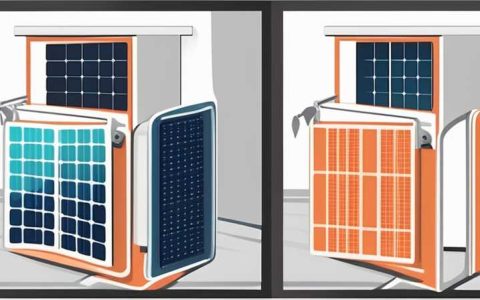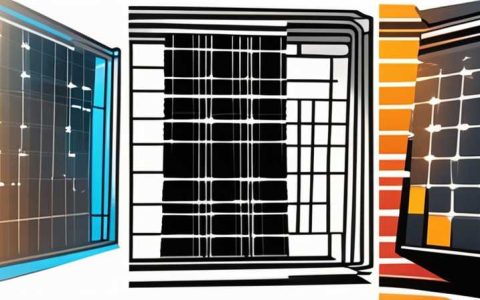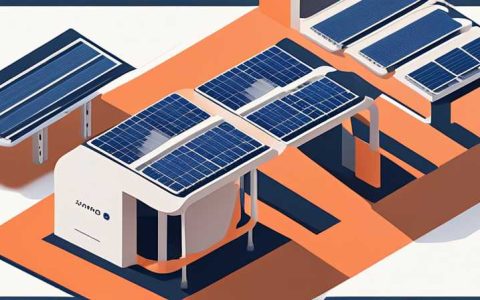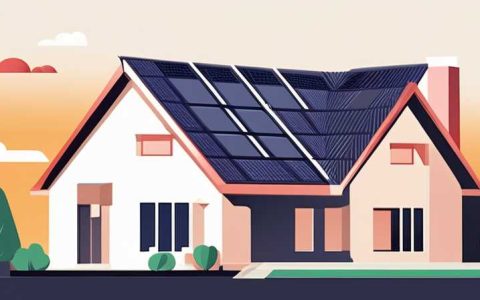
1. Understanding Solar Cell Addition
Calculating the addition of solar cells involves several key components: 1. Determine wattage requirements, 2. Assess individual cell voltage and current ratings, 3. Calculate the series and parallel configurations, 4. Factor in efficiency losses. Each of these factors plays a pivotal role in ensuring accurate calculations to maximize energy production.
2. DETAILED EXPLANATION OF WATTAGE REQUIREMENTS
The first step in this process involves a comprehensive understanding of the energy demands of the system. Identifying the total wattage needed requires analyzing energy consumption patterns. This includes quantifying the watt hours for all devices intended to be powered by the solar installation. Each appliance has a specific wattage rating, often listed on the device itself. For a complete assessment, it is essential to consider usage duration and multiply wattage by operational hours. This process yields total energy requirements, which serves as the foundation upon which solar cell addition calculations are based. More complex systems may require a greater number of cells to accommodate peak demands and ensure robustness, particularly in areas with variable sunlight availability.
Once the energy requirements are noted, one can evaluate how many solar panels will be needed to meet these needs. Each solar panel typically has a rated wattage, often between 250 and 400 watts per panel. Calculating the total number of cells can then occur by dividing the total wattage requirement by the wattage of an individual panel. This calculation provides a baseline number of the solar panels necessary to harness sufficient energy effectively.
3. UNDERSTANDING INDIVIDUAL CELL VOLTAGE AND CURRENT RATINGS
Solar cells are rated for both voltage and current to provide clear specifications of how much power they can generate under optimal conditions. Each solar cell usually operates at around 0.5 to 0.6 volts. However, the total system voltage will vary depending on whether cells are arranged in series or parallel. Arranging cells in series increases the total voltage, while placing them in parallel provides a higher current. For efficient operation, the combination of these two orientations must match the inverter’s specifications.
When determining the suitability of solar cells for a given installation, one must delve deeper than mere rated values. It’s crucial to analyze the maximum power point tracking (MPPT) specifications of the inverter alongside the voltage and current characteristics of the cells. The efficiency of power conversion from the cells to usable energy hinges on how well the inverter can adapt to varying input. Proper alignment between the solar cell ratings and the inverter specifications maximizes energy output, leading to more reliable system performance in diverse conditions.
4. CONFIGURING SERIES AND PARALLEL ARRANGEMENTS
At this juncture, the choice of configuring the cells either in series or parallel has substantial implications for the system’s output. The series arrangement will add the voltage while maintaining current levels identical to one cell. For instance, if four panels rated at 300 watts and operating at 36 volts each are connected in series, the total voltage becomes 144 volts but the current remains the same as a single panel. This configuration is particularly beneficial when aiming for high-voltage systems, enabling longer cable runs with reduced losses.
However, the series system comes with a caveat; shading on any one panel can significantly impact the output from the entire string. A significant dip in performance can occur if one cell underperforms. This necessitates the use of bypass diodes, which help alleviate power drops due to shading by allowing current to bypass the underperforming cell.
On the flip side, arranging cells in parallel allows the current to increase while keeping the voltage constant. With the same four 300-watt panels, when placed in parallel, the voltage remains at 36 volts, but the current is the sum of all panels, providing greater combined output at lower voltages. This setup is advantageous for residential applications where devices operate at lower voltages. Moreover, because parallel configurations are less sensitive to shading, they enhance reliability and performance across a range of conditions.
5. FACTORING IN EFFICIENCY LOSSES
Undoubtedly, efficiency is crucial in realizing actual output from solar cells. Several variables can influence system efficiency, often leading to discrepancies between theoretical outputs and real-world performance. Factors contributing to these losses include temperature, shading, and inverter efficiency. As temperatures rise, solar cell efficiency can decrease primarily due to increased resistance within the cells.
Shading, whether from trees, buildings, or other obstructions, poses a significant risk to efficiency. It is essential to conduct proper site analysis before installation to account for potential shading scenarios throughout the day. Even partial shading can lead to performance drops, severely limiting the overall energy yield.
Inverter efficiency is another pivotal aspect of overall system performance. Inverters convert the direct current (DC) from solar panels into usable alternating current (AC). Each inverter has a peak efficiency rating which indicates how much input power is converted into output power. As a general rule, aiming for inverters with efficiency ratings above 90% can help compensate for losses incurred during this conversion.
6. CALCULATING FINAL OUTPUT GENERATION
To confidently ascertain energy production, it’s essential to accumulate the total potential output based on the configuration selected while accounting for losses. Taking the total number of panels multiplied by their rated wattage provides the theoretical maximum output in peak sunlight hours. However, factoring in the efficiency losses is crucial for obtaining realistic generation estimates. The formula may look something like this:
Total System Output = (Number of Panels × Wattage per Panel) × (Hours of Sunlight per Day) × (Efficiency Loss Ratio).
Analyzing areas that fall within the sunniest regions might yield higher potential outputs compared to those in cloudier locales. Engaging in comprehensive site analysis, including seasonal variations and local climate data, further aids in making more precise calculations.
7. MAINTAINING YOUR SOLAR SYSTEM
To maintain optimal performance from a solar system, regular inspection and servicing are advisable. Grime and debris build-up on solar panels can significantly impede their efficiency by blocking sunlight. Regular cleanings can help ensure that panels function at peak capacity. It’s also essential to inspect wiring for any signs of wear or issues which may lead to inefficiencies or hazardous results.
Monitoring performance over time can provide early indications of problems, facilitating timely interventions. Utilizing monitoring systems that track output can prove invaluable for ensuring that expected energy yields meet operational expectations, enabling preventative measures before more severe issues develop.
In conclusion, accurately calculating the addition of solar cells requires meticulous attention to numerous factors including wattage requirements, individual cell specs, configuration choices, and efficiency losses. Each component plays a vital role to ensure that solar installations provide reliable and sustainable energy outputs over their lifetime. Proper planning and analysis are key to leveraging the full potential of solar technology against fluctuating energy demands and environmental conditions.
COMMON INQUIRIES ABOUT SOLAR CELL CALCULATIONS
1. HOW DOES THE CONFIGURATION OF SOLAR CELLS IMPACT ENERGY OUTPUT?
The configuration of solar cells—either in series or parallel—directly influences energy output and overall system efficiency. In series configurations, the voltage increases while current remains constant, making this setup more suited for high-voltage applications. Conversely, arrangements in parallel allow increased current but maintain voltage levels, ideal for low-voltage applications. It’s important to consider the implications of shading and the characteristics of connected devices when determining configuration, as both elements can drastically affect energy availability.
2. WHAT FACTORS SHOULD BE CONSIDERED FOR EFFICIENCY LOSSES?
Efficiency losses can stem from several factors, including temperature variations, the presence of shade, and inverter performance. High temperatures can reduce the effectiveness of solar panels, leading to increased resistance and lower output. Shading can dramatically impact system performance, often affecting panels even if just partially covered. Furthermore, the efficiency with which an inverter converts DC to AC plays a crucial role. Selecting high-quality, efficient inverters and regularly monitoring their performance can mitigate these losses.
3. HOW CAN I IMPROVE MY SOLAR PANEL PERFORMANCE?
Improving solar panel performance entails a proactive approach to maintenance and monitoring. Regular cleaning to remove dust and debris is crucial, as is consistent inspection of wiring and connections to ensure there are no faults hindering performance. Implementing monitoring systems allows for real-time tracking of output, enabling early identification of potential issues. Additionally, adjusting the angle of solar panels can optimize sunlight capture during different seasons, maximizing energy production year-round.
FINAL COMMENTS
The ability to calculate the addition of solar cells requires a nuanced understanding of various interrelated factors ranging from wattage, configuration, to efficiency losses. By comprehensively evaluating each component and ensuring that configurations are optimized according to individual needs, one can enhance the effectiveness of a solar energy system. Practicing diligent maintenance and being attuned to system performance will ensure longevity and reliability. Building a successful solar energy system is not just about initial calculations but also involves a commitment to continual improvement and adaptation to changing conditions.
Original article by NenPower, If reposted, please credit the source: https://nenpower.com/blog/how-to-calculate-the-addition-of-solar-cells/










